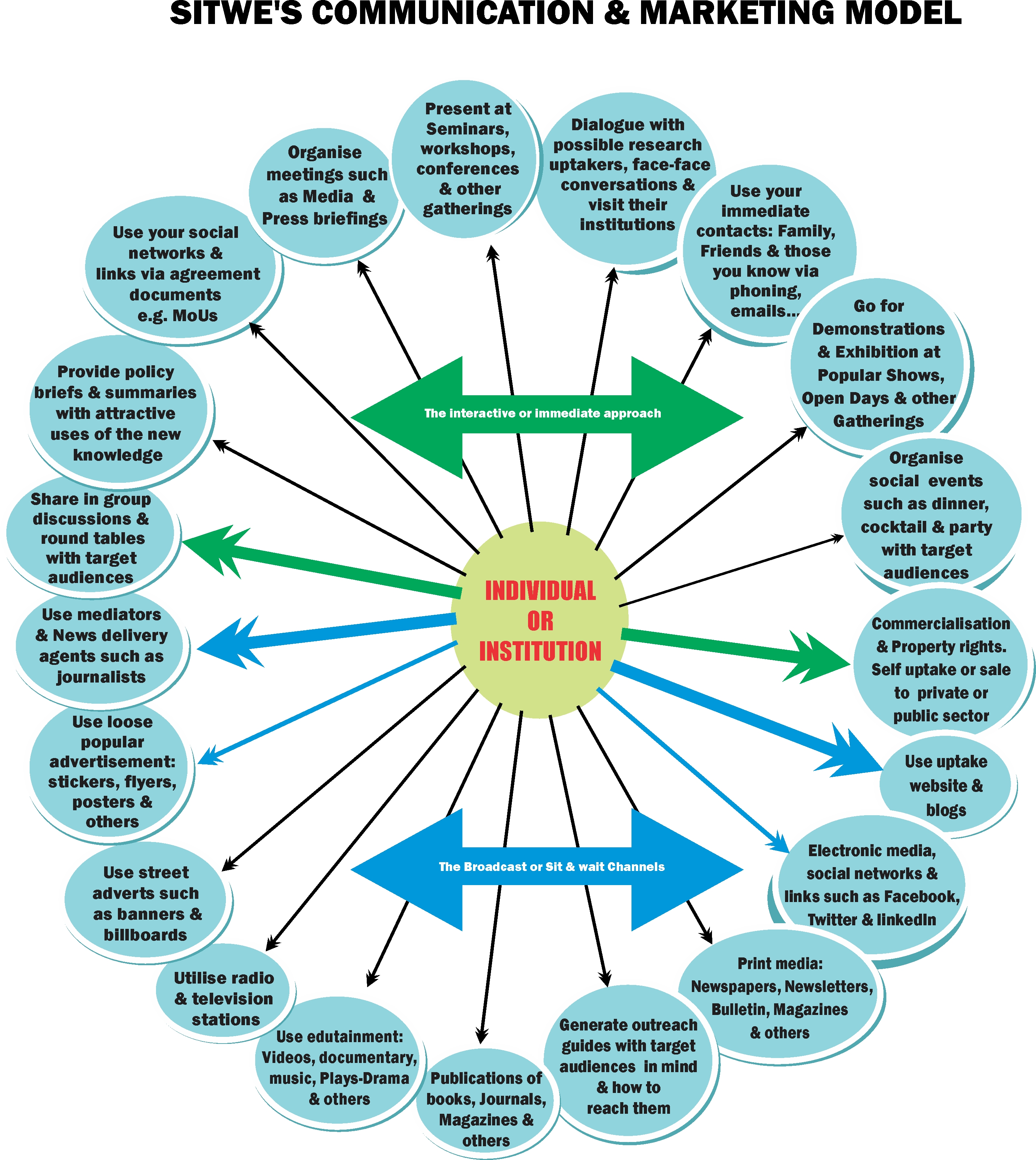UNZA Don releases a new Model currently being used in over thirty Universities World wide
- Details
- Category: Uncategorised
- Published on Monday, 24 February 2014 17:57
- Written by PReSTID
The University of Zambia Don in the School of Education Department of Language and Social Sciences Education unleashes a new communication, knowledge transfer, exchange and research uptake model tagged “Sitwe’s SRUCU Model” commonly known in other parts of the world as Sitwe's Communication and Marketing Model which is now being used in over thirty countries throughout the world.

Sitwe Benson Mkandawire a Researcher and Lecturer in Applied Linguistics started developing the model early 2011 when he was actively involved in disseminating University of Zambia research output through radio, media briefings, institutional visits and other channels.
The model was first presented in 2012 and 2013 as a working model on the Corperate Graduate Link (CoGL) International Consortium Forum and on the Development Research uptake in Sub-Sahara Africa (DRUSSA)’s online platform article two and article three and early 2014 after it was accepted as a proper idealized representation of reality that help researchers, scientists and research institutions to explore various ways of having their new knowledge up taken and reach the end users. It was presented as fully fledged model in article four with reserved forms of usage and explanations which appear in a book now in press. People from different parts of the world commented on the working models which were presented with options, strategies and tools separately. These articles were exposed to over one thousand people in many countries including United Kingdom, America, Netherlands and the following specific universities in Africa
|
East Africa
|
|
|
|
Ethiopia |
Addis Ababa |
|
|
Kenya |
Nairobi |
|
|
Kenya |
Eldoret |
|
|
Kenya |
Nairobi |
|
|
Mauritius |
Mauritius |
|
|
Rwanda |
Butare |
|
|
Rwanda |
Kigali |
|
|
Uganda |
Mbarara |
|
|
Uganda |
Kampala |
|
|
|
|
|
|
Southern Africa
|
|
|
|
Botswana |
Gaborone |
|
|
South Africa |
Alice |
|
|
South Africa |
Cape Town |
|
|
South Africa |
Bloemfontein |
|
|
South Africa |
Medunsa |
|
|
Zambia |
Lusaka |
|
|
Zimbabwe |
Harare |
|
|
Zimbabwe |
Bulawayo |
|
|
|
|
|
|
West Africa
|
|
|
|
Cameroon |
Yaounde |
|
|
Cameroon |
Buéa |
|
|
Ghana |
Accra |
|
|
Ghana |
Kumasi |
|
|
Nigeria |
Ile-Ife |
|
|
Nigeria |
Ibadan |
|
|
Nigeria |
Calabar |
Sitwe’s SRUCU Model states that when a new knowledge is generated out of research, science trials, accidental or planned invention, innovation or discovery by an individual or an institution, such knowledge can be developed or turned into products and services through specific channels of communication. Individuals with new knowledge can conveniently choose which options can help them take their new knowledge to policy makers or industries so that their new knowledge is tuned to real time products and services that can be appreciated by the general public as end users. Industries can also choose specific approaches or channels to use in having their new knowledge or ideas developed by other scientists.
Sitwe’s model guide researchers, scientists and institutions on how they can take their research results and scientific outcomes into use or to those who can help put their new knowledge into effective use for the betterment of the society. In using this model, individual or institutional ideas can be developed by sharing them with target groups and personnel with expertise.



